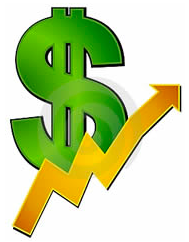Articles and News
Economic Upturn Buoys Confidence As Leading Indicators, GDP, And Shopping Season All Point Up November 05, 2014 (0 comments)

San Francisco, CA—The U.S. economy grew at a solid pace in the third quarter, and The Leading Economic Index (LEI) grew a strong 0.8% month-over-month in September following a flat reading in August, according to recent reports from Wells Fargo Economics Group. Consumer confidence also rose to its highest level since 2007.
LEI gains were broad based and credit conditions are improving as banks are still gradually loosening lending standards and revolving credit has been gaining momentum in recent months. Labor market indicators continue to improve as payroll growth returned to the 200,000-plus gains experienced in all but two months of this year, the jobless claims figure continues its downward trend, and the unemployment rate is just below 6%. Initial jobless claims reached their lowest monthly level in September since January 2006. The downward trend continued into October as the four-week moving average fell for the sixth consecutive month. While wage growth continues to be relatively muted, weekly hours have ticked up and contributed 0.06 percentage points in September. Building permits and housing starts data reported in late October also were both relatively firm, but permits made only a relatively modest contribution to the total and this could be a sign of caution going forward.
The only component to impose a small net drag was consumer expectations, as some global turmoil may be affecting overall sentiment.
U.S. real GDP rose at an annualized rate of 3.5% in the third quarter relative to the previous quarter, which also was a bit stronger than most analysts had anticipated. Not only did the solid outturn come on the heels of the 4.6% rate that was registered in Q2, but the underlying spending details in the Q3 data show that the U.S. economy has a fair bit of momentum behind it at present.
Real personal consumption expenditures rose at a modest pace of only 1.8% in Q3, as growth in services continued to be weak. Some of this is due to weakness in utilities consumption, but durable goods consumption was very strong, rising 7.2% on the back of very strong growth in auto sales.
Wells Fargo economists believe the economy is reasonably solid at this point. “We look for real GDP growth in Q4 to downshift a bit relative to Q3. That said, we believe that the expansion is becoming more and more self- sustaining, and we forecast that real GDP will grow roughly 3 percent per annum in both 2015 and 2016. If realized, that would be the strongest two-year period of real GDP growth for the U.S. economy since the middle of the 2001-07 economic expansion,” says the report.
The Federal Reserve is moving slowly toward normalization of monetary policy and the GDP data for Q3 show that the U.S. economy is becoming a bit more “normal” as well.
Despite the Ebola scare and ongoing global tensions, consumers appear to be ignoring the bad news. According to the latest figures from the Conference Board, consumers still expect to see an improving economy, with higher expectations for business conditions, employment and income. The number of consumers reporting plentiful employment and good current business conditions also improved in October, bringing the index to 94.5, up from 89.0 in September.
“The magnitude of the increase was particularly surprising given the drop in stock prices. The cutoff date for the consumer confidence survey was October 16, when the S&P 500 had yet to bounce back after tumbling more than 100 points over the week,” says Wells Fargo’s economic report.
The labor market seems to be critical for consumers. September’s unemployment rate, released October 3, fell to 5.9% from 6.1%, and hearing that the unemployment rate finally fell below 6% likely resonated with consumers and added to their optimism for the future. Additionally, consumers are likely feeling better now that gas prices are coming down. The average cost per gallon of gas in the United States fell about 30 cents in a month, and paying less at the pump bodes well for consumption of other goods and services and the holiday shopping season.
Looking ahead, Wells Fargo’s economists anticipate consumer confidence is likely to improve for November as gas prices continue to move lower and stock prices rebound.







